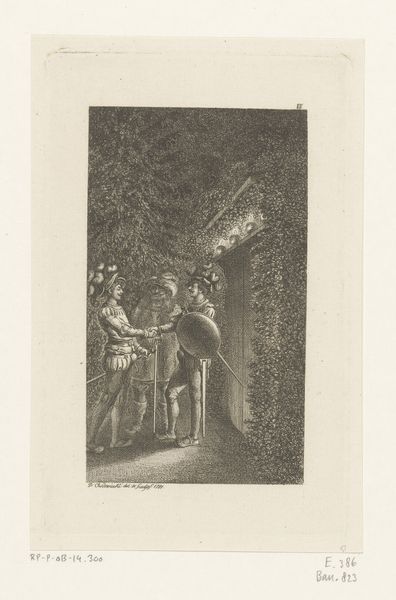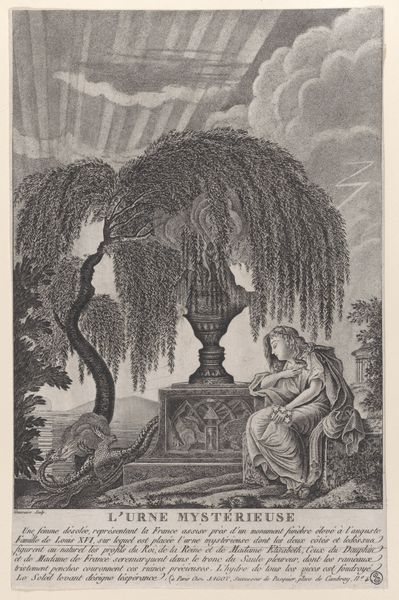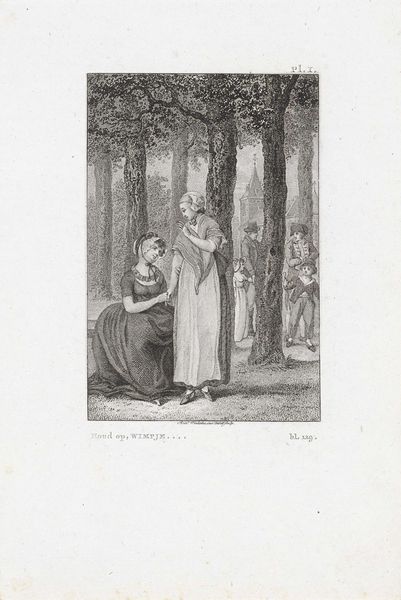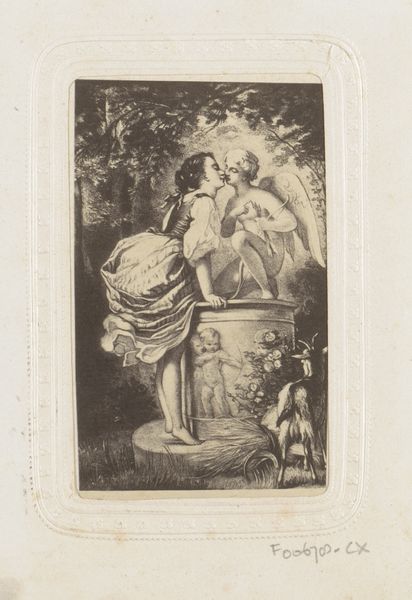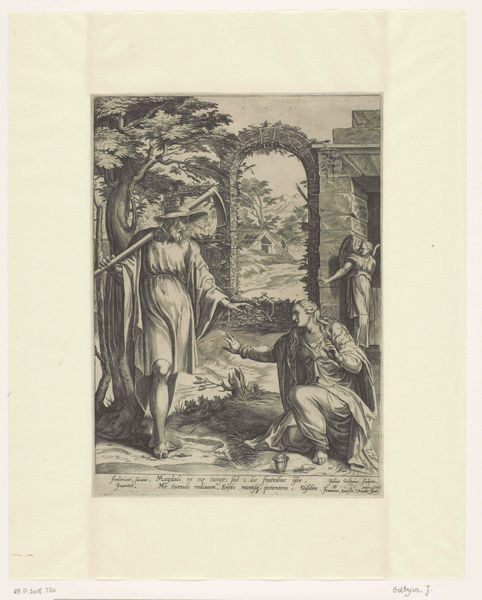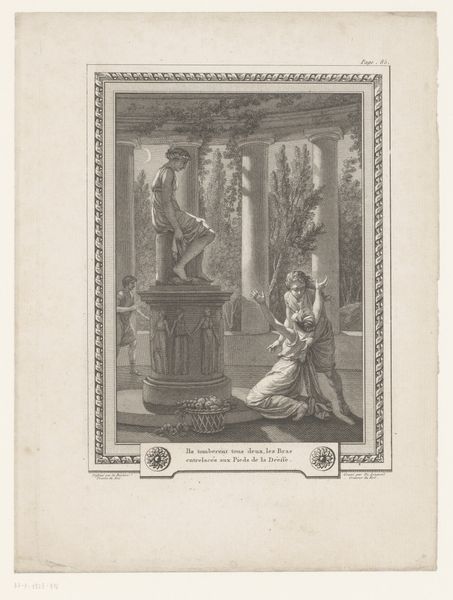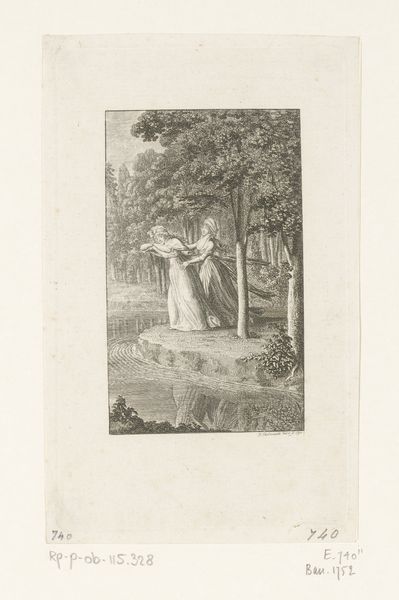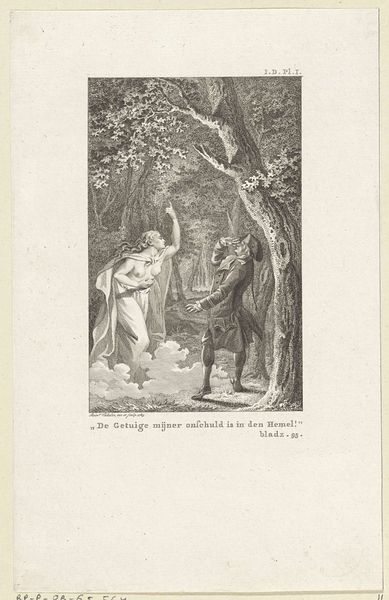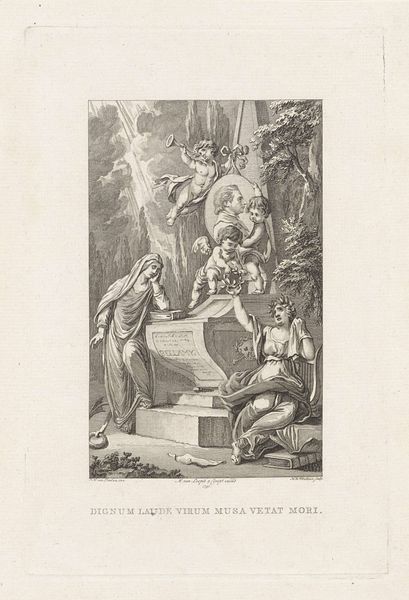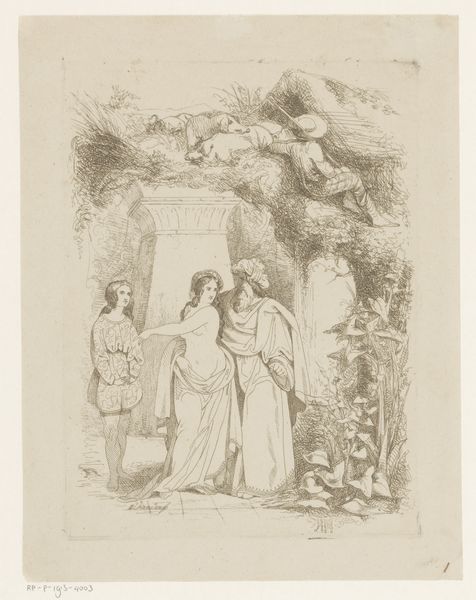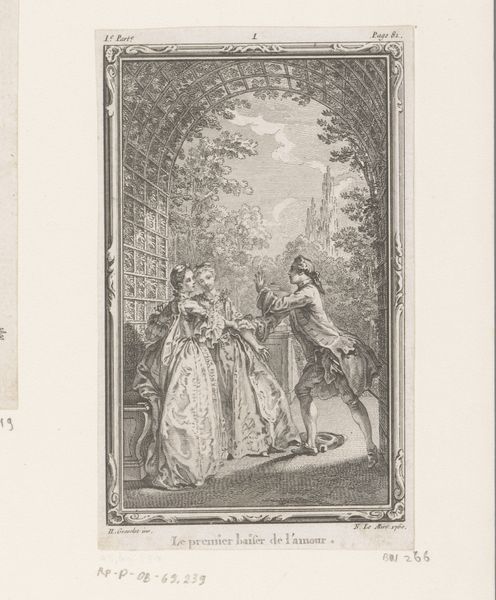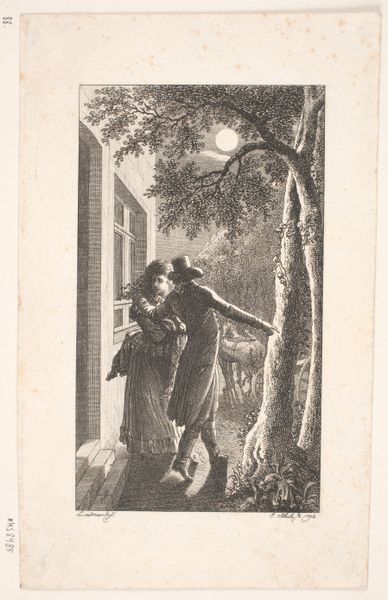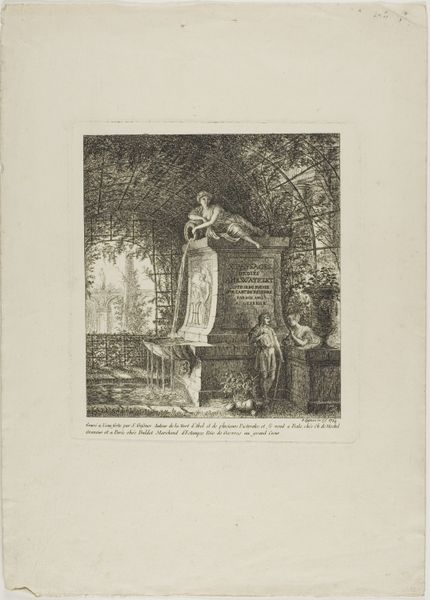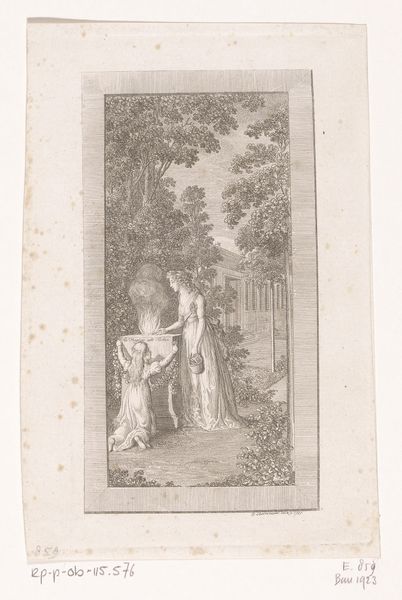
drawing, print, graphite, engraving
#
drawing
#
statue
# print
#
landscape
#
figuration
#
graphite
#
genre-painting
#
academic-art
#
engraving
Dimensions: height 417 mm, width 296 mm
Copyright: Rijks Museum: Open Domain
Curator: This is Charles Kreutzberger’s "Fountain with children, one with a fish in his arms," created around 1875. It seems to be a print, likely an engraving, which allows for those delicate details rendered with graphite and ink. What’s your immediate reaction to it? Editor: Well, first, the strong verticality and monochromatic palette lends a sense of formality. The intricate rendering of the trees, the classical fountain – it evokes a rather restrained, almost melancholic, atmosphere, wouldn't you say? Curator: Restrained, yes, but perhaps that's a product of its time. Kreutzberger lived and worked during the rise of academic art, where representations often idealized and romanticized, attempting to showcase an elevated aesthetic detached from societal turmoil. That fountain, though presented as a landscape piece, can be understood as a comment on purity. The fish becomes symbolic too; consider the pervasive usage of aquatic entities during this period—often indicative of cleansing rituals tied to socioeconomic healing. Editor: I can see your point, especially with those classically draped figures adorning the fountain, although it's their composition I'm most drawn to. Observe the way they huddle together— a single organism—each face in a delicate shadow— all oriented in slightly different ways... Note also the horizontal emphasis in the upper tiers that acts to flatten out space Curator: And that emphasis on their interaction certainly shifts when we start discussing themes of identity formation – the bodies intertwined suggesting perhaps a subtle tension between individualism and societal expectations. What's expected of each during this time. Or we can see it through a social framework, perhaps the vulnerability of youth cast in this landscape, commenting silently about resource control given the time. Editor: That’s an intriguing angle. While the composition definitely anchors these figures within a rigid structure, it's hard to reconcile any direct socioeconomic reference without overt clues... Ultimately, the form seems more concerned with idealized harmony. Curator: Perhaps. But for me, the engraving acts as a poignant marker. It invites us to consider not only the formal beauty but also its historical context. It provides another reminder, told via the figures cast in a garden, on who thrives, who simply survives—a discussion we have now and surely had then. Editor: Fair enough. It seems both the artistry of form and layers of context contribute to its long-lasting impact, rendering discussions around it vibrant to this day.
Comments
No comments
Be the first to comment and join the conversation on the ultimate creative platform.
